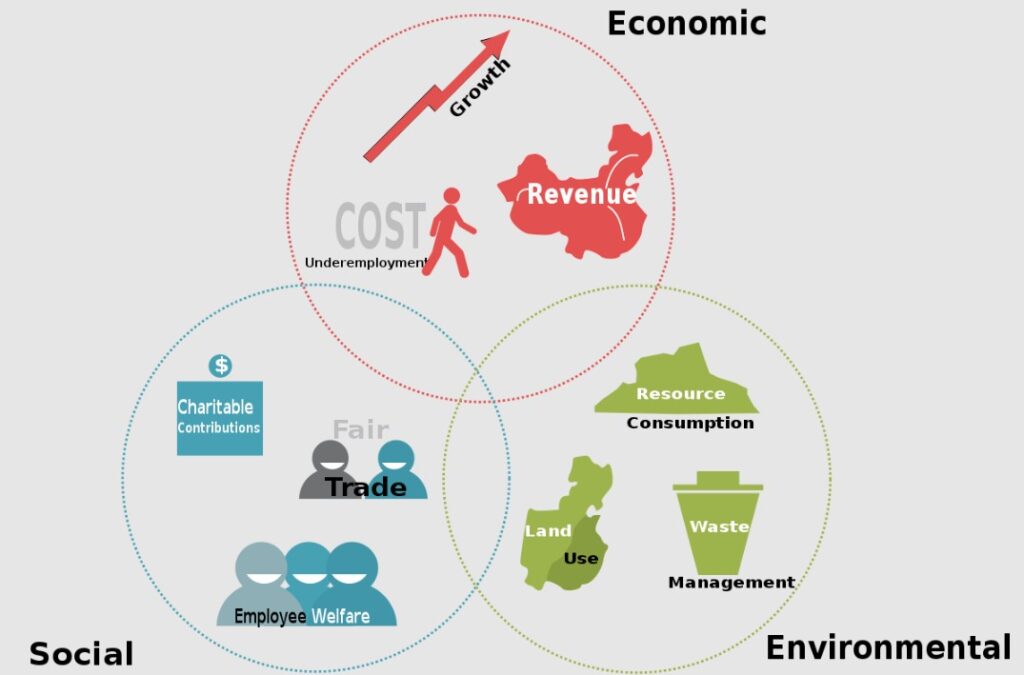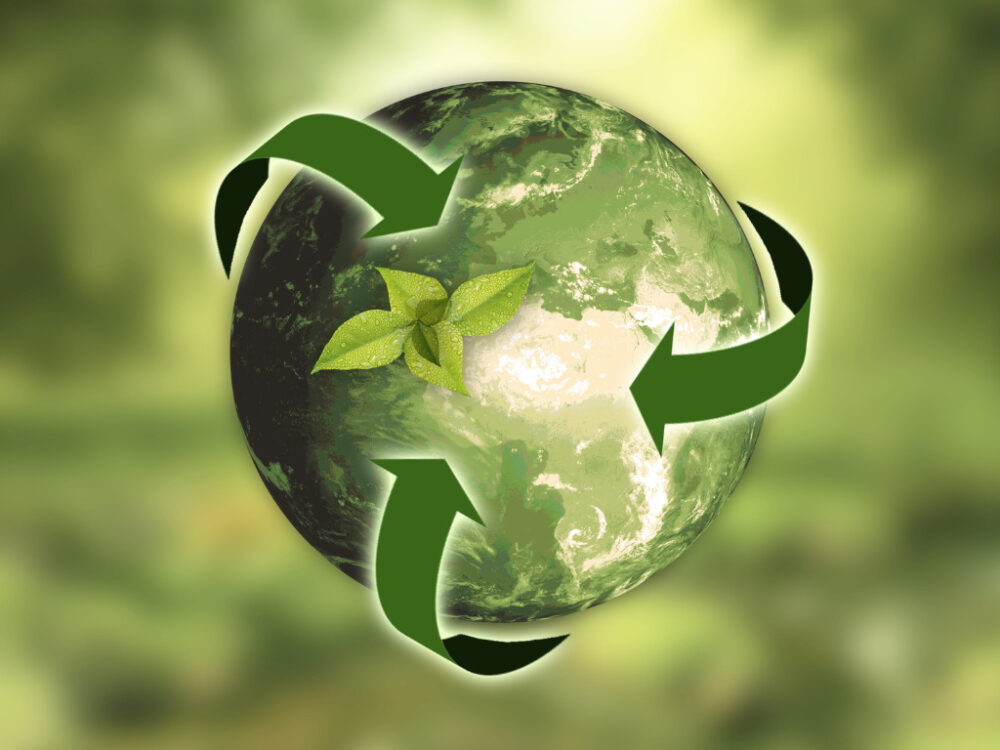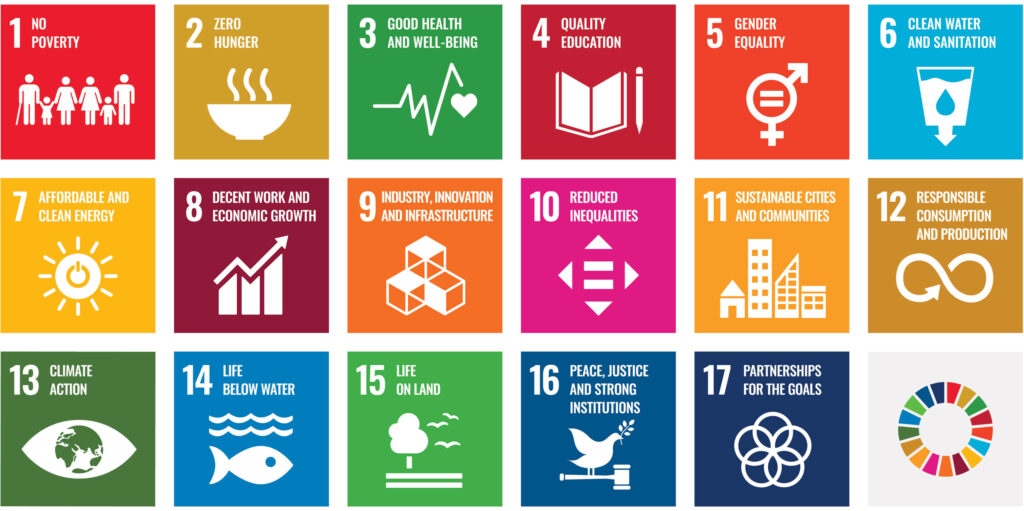Sustainability is a buzzword that we hear all the time these days. But what exactly does it mean? It is the ability to maintain and support the natural systems and resources on which we rely. It involves finding solutions to meet our current demands without jeopardizing future generations’ ability to meet their own.
But why does sustainability matter? It matters because our planet faces unprecedented challenges, from climate change to resource depletion. We need to find ways to address these sustainability challenges. In this blog, we will unveil the crucial pillar of sustainability. We will also discuss its various benefits. So, let us dive in.
3 Pillars of Sustainability

Source: wikipedia.org
Economic, social, and environmental sustainability are the three pillars at the heart of sustainability. These three pillars are interconnected and interdependent, forming the foundation of a sustainable future.
- Economic sustainability ─ It refers to an economy’s ability to sustain and support itself through time. It entails figuring out how to build a stable, growing economy that can meet the requirements of both current and future generations. Sustainable business practices, green technologies, and responsible resource management are examples of economic sustainability.
- Social sustainability ─ This is a society’s ability to support the demands of its people, both present and future while fostering social justice and equality. Social sustainability is building an inclusive, equitable, resilient society that embraces diversity and human rights. Access to education, healthcare, and affordable housing are examples of social sustainability, as are community engagement and empowerment.
- Environmental sustainability ─ It is the ability of natural systems to support and sustain themselves throughout time with the least amount of adverse ecological effects caused by human activity. To do this, we must find methods for preserving biodiversity, reducing our carbon footprint, and improving the health of our ecosystems. Practises that promote a sustainable environment include renewable energy, conservation efforts, and sustainable agriculture.
These three pillars form a robust framework for building a sustainable future. By balancing economic, social, and environmental considerations, we can create a prosperous and sustainable world that meets the needs of all its members, both present and future.
The Importance of Sustainability

Source: greenqueen.com.hk
Sustainability is crucial for the welfare of the planet and upcoming generations. It ensures the preservation of ecosystems and prudent resource utilization. Sustainability’s three key benefits are environmental, economic, and social benefits.
Environmental Benefits
Sustainability can protect and conserve natural resources like forests, water, air, and biodiversity. It lessens harmful carbon emissions, waste, and pollution. We can reduce our negative impact on the environment. Adopting sustainable practices will allow us to ensure that it is healthy for future generations.
Economic Benefit
Sustainability fosters economic growth by encouraging ethical production and consumption practices. It promotes a vibrant economy, fosters innovation, and generates opportunities for green jobs. We can achieve both egalitarian and long-term economic development by implementing sustainable practices.
Social Benefits
Sustainability advances social justice by ensuring that resources are distributed fairly and communities are given the tools to succeed. It promotes social cohesiveness, upholds community welfare, and defends human rights. We can create an inclusive, just, and fair society by embracing sustainable practices.
The Role of Education in Sustainability

Source: bound-intl.com
Education plays a vital role in promoting sustainability and fostering a mindset of environmental stewardship. By incorporating it into educational systems, we can equip individuals with the knowledge and skills necessary to address current and future sustainability challenges. Here are two key aspects highlighting the importance of education in sustainability:
Creating Awareness and Understanding
Education is crucial in raising awareness about its issues and their impacts. It helps individuals understand the interconnectedness of economic, social, and environmental factors, providing a holistic view of sustainability. Through education, people can grasp the urgency and significance of these practices and become motivated to take action.
Fostering Innovation and Problem-Solving
Sustainability education encourages critical thinking and problem-solving skills necessary for developing innovative solutions. By promoting interdisciplinary approaches and nurturing creative thinking, education empowers individuals to identify and implement these practices in various fields. It cultivates a mindset of continuous improvement and adaptability, essential for addressing complex sustainability challenges.
Education systems at all levels, from primary schools to universities and beyond, have a responsibility to integrate it into their curricula. By doing so, we can empower individuals to become active agents of change and drive the transition toward a more sustainable future.
Sustainable Development Goals (SDGs) and Sustainability

Source: sweco.co.uk
The United Nations’ Sustainable Development Goals (SDGs) serve as a global framework for achieving sustainability in all its dimensions. The SDGs encompass 17 interconnected goals that address social, economic, and environmental challenges. Here are two key aspects highlighting the relationship between the SDGs and sustainability:
Holistic Approach to Sustainability
The SDGs provide a comprehensive roadmap for addressing various sustainability issues simultaneously. They recognize the interlinkages between different aspects of sustainability and emphasize the need for integrated approaches. By promoting synergies among the goals, the SDGs encourage comprehensive strategies that consider the economic, social, and environmental dimensions of sustainability.
Collaboration and Global Action
The SDGs call for collaboration and collective action at the global level. They acknowledge that sustainability challenges transcend national boundaries and require joint efforts to achieve meaningful impact.
The SDGs serve as a common agenda, rallying governments, businesses, civil society organizations, and individuals around shared goals. Collaboration and partnerships are essential for leveraging diverse expertise, resources, and knowledge to drive sustainable development worldwide.
Conclusion
We all need to accept sustainability as a way of life to ensure a better future; it is not simply a trendy word. It is about taking accountability for our deeds and making decisions that are in the best interests of society and the environment. By embracing sustainable practices, we can build a more fair, resilient, and thriving world.
We face obstacles to attaining sustainability, from climate change to resource depletion and population increase. The good news is that we can crush these obstacles and create a sustainable future if we have the proper attitude and work together. Bettering everyone’s quality of life is more important than conserving the environment.

























